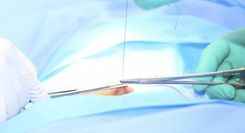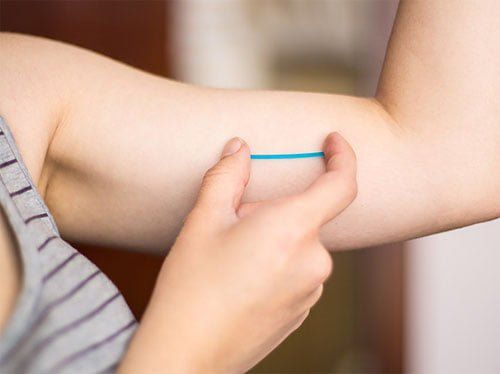Women who give birth vaginally typically experience a faster recovery compared to those who undergo a cesarean section. However, not all mothers can have a smooth vaginal delivery. Many choose or are required to have a cesarean delivery due to medical reasons. This raises a common question: Is it safe to become pregnant again one year after a cesarean section? This concern is frequently voiced by mothers who face unplanned pregnancies ('oops pregnancies') shortly after their cesarean or by those intentionally planning closely spaced pregnancies.
1. Can You Become Pregnant One Year After a Cesarean Section?
The interval between childbirths plays a critical role in ensuring the health and safety of both the mother and baby. Many women wonder whether it is safe to conceive again just one year after a cesarean section. Generally, if a woman has had a cesarean delivery for her first childbirth, she is likely to have another cesarean for subsequent deliveries. However, conceiving too soon after the first cesarean can pose significant risks to the mother, as the surgical incision needs sufficient time to heal completely.
In practice, becoming pregnant one year after a cesarean is not an uncommon scenario. Importantly, this does not mean that every woman in this situation will be advised to terminate the pregnancy. A safe outcome for both mother and baby is achievable with careful monitoring and appropriate care. Women in this situation should undergo regular check-ups to assess the condition of the previous uterine incision and ensure there are no complications. It is advisable to plan delivery at a well-equipped facility, such as a provincial or specialized obstetric hospital, to manage any potential risks effectively.
During this time, any unusual symptoms should prompt immediate medical attention to identify the cause and take timely, appropriate action.
In summary, is it safe to conceive one year after a cesarean section? The answer is not a definitive "No," but such early pregnancies are generally not recommended. Adequate spacing between pregnancies is always encouraged to ensure optimal recovery and minimize risks.
Trắc nghiệm: Đau lưng sau sinh mổ và những điều cần biết
Sau sinh mổ, bà mẹ không chỉ đau đớn với vết khâu bụng dưới mà còn đối mặt với những cơn đau lưng. Mức độ đau lưng sau sinh mổ theo thống kê chiếm đến hơn 70% các trường hợp. Trả lời nhanh 5 câu hỏi trắc nghiệm sau sẽ giúp bạn có thêm kiến thức để hạn chế tình trạng này.The following content is prepared under supervision of Thạc sĩ, Bác sĩ y khoa, Tạ Quốc Bản , Sản phụ khoa , Khoa Sản phụ khoa - Bệnh viện Đa khoa Vinmec Phú Quốc
2. Risks of Conceiving Too Soon After a Cesarean Delivery
2.1 Rupture of the Previous Cesarean Scar
One significant risk of becoming pregnant again within a short period—such as one year or less—after a cesarean section is the possibility of uterine scar rupture. The surgical scar on the uterus may not have fully healed, and as the fetus grows and the uterus expands, the increased tension can lead to the rupture of the scar.
Although not all pregnant women experience uterine scar rupture, the risk is notably higher, particularly in the later months of pregnancy. If a pregnancy occurs unintentionally after a recent cesarean, it is essential to strictly follow medical advice and monitor for warning signs of complications. Early detection and timely medical intervention can prevent serious outcomes.
Uterine scar rupture is primarily dangerous for the mother, potentially leading to severe complications such as hemorrhage or the need for emergency surgical intervention. Therefore, if conception occurs soon after a cesarean, the expectant mother should have regular check-ups and be alert to any unusual symptoms to ensure prompt care.

2.2 Increased Risk of Placenta Accreta
Placenta accreta is a serious condition where the placenta attaches abnormally deep into the uterine wall, often involving the cesarean scar. During delivery, the removal of the placenta becomes challenging, leading to severe hemorrhage. In extreme cases, this may necessitate a hysterectomy (surgical removal of the uterus) to control bleeding and ensure maternal safety.
2.3 Implantation at the Cesarean Scar Site (Cesarean Scar Pregnancy)
A rare but serious complication, cesarean scar pregnancy occurs when the embryo implants directly into the uterine scar from a previous cesarean delivery. This condition carries a high risk of life-threatening bleeding during pregnancy or delivery. In severe cases, removal of the uterus may be required to save the mother’s life. This underscores the importance of adequate spacing between pregnancies to allow for scar healing.
2.4 Uterine Scar Bleeding Throughout Pregnancy
As the fetus grows, the expanding uterus places tension on the cesarean scar. This tension can lead to scar dehiscence (partial rupture) or complete rupture, resulting in bleeding. Uterine scar bleeding can occur as early as the second trimester and is more common in the third trimester. Such events can pose significant risks to both the mother and the baby.
3. When Can You Safely Get Pregnant After a Cesarean Delivery?
Obstetricians generally recommend waiting at least 18–23 months after a cesarean delivery before becoming pregnant again. This interval provides sufficient time for the uterine scar to heal completely, reducing the risk of complications in subsequent pregnancies. Ideally, a spacing of 2–3 years is recommended.
For women over 35, where fertility considerations may take precedence, shorter intervals may be considered. However, these decisions should always be made in consultation with a healthcare provider who can assess individual risk factors and scar healing.
4. Should You Consider Termination for Closely Spaced Pregnancies?
When pregnancies occur too close together, some mothers may contemplate termination.
However, this option is not without risks, especially when the cesarean scar is still healing. Medical or surgical abortion in such cases can strain the scar further, increasing the risk of uterine rupture, hemorrhage, or future infertility. The presence of an unhealed cesarean scar also raises the likelihood of complications during the procedure itself.
For women in this situation, close monitoring and thorough discussions with healthcare professionals are essential to evaluate all options and prioritize safety for both the mother and future pregnancies.

If you find yourself pregnant just one year after a cesarean delivery, it is crucial to seek advice from a qualified specialist. Consulting with an experienced doctor ensures you receive proper guidance tailored to your situation. Avoid making decisions, such as terminating the pregnancy, without professional input, as the risks of such actions may outweigh the perceived benefits.
5. How to Minimize Risks Associated with Cesarean Deliveries?
According to MSc. Dr. Nguyen Ngoc Chien, a clinical doctor at the Reproductive Support Center, Vinmec Times City International Hospital:
Timing of Cesarean Section
- If a cesarean delivery is necessary, avoid scheduling surgery solely for convenience (e.g., selecting a specific date or time). Delivering closer to the estimated due date supports better healing and scar formation.
Choosing Your Surgeon and Hospital
Selecting a reputable hospital and an experienced surgeon is essential. While cesarean delivery is a standard procedure, complications can arise, especially in more complex cases. A skilled surgeon balances precision and timing; neither rushing (15–20 minutes) nor prolonging the procedure unnecessarily (over an hour). The optimal duration typically ranges between 30 minutes to an hour, depending on the case's complexity. Poor surgical technique may lead to complications such as scar defects or fluid accumulation at the incision site. While some attribute complications to a patient’s natural physiology, surgical expertise plays a significant role.At Vinmec Hospital, modern pain management techniques like ultrasound-guided nerve blocks ensure minimal postoperative discomfort. The latest evaluations reveal that cesarean patients no longer require morphine for pain relief, with most reporting little to no pain during movement or routine activities after delivery. By choosing a skilled team and advanced facilities, risks associated with cesarean deliveries can be significantly minimized, ensuring better outcomes for both mother and baby.
To arrange an appointment, please call the HOTLINE or make your reservation directly HERE. You may also download the MyVinmec app to schedule appointments faster and manage your reservations more conveniently.















